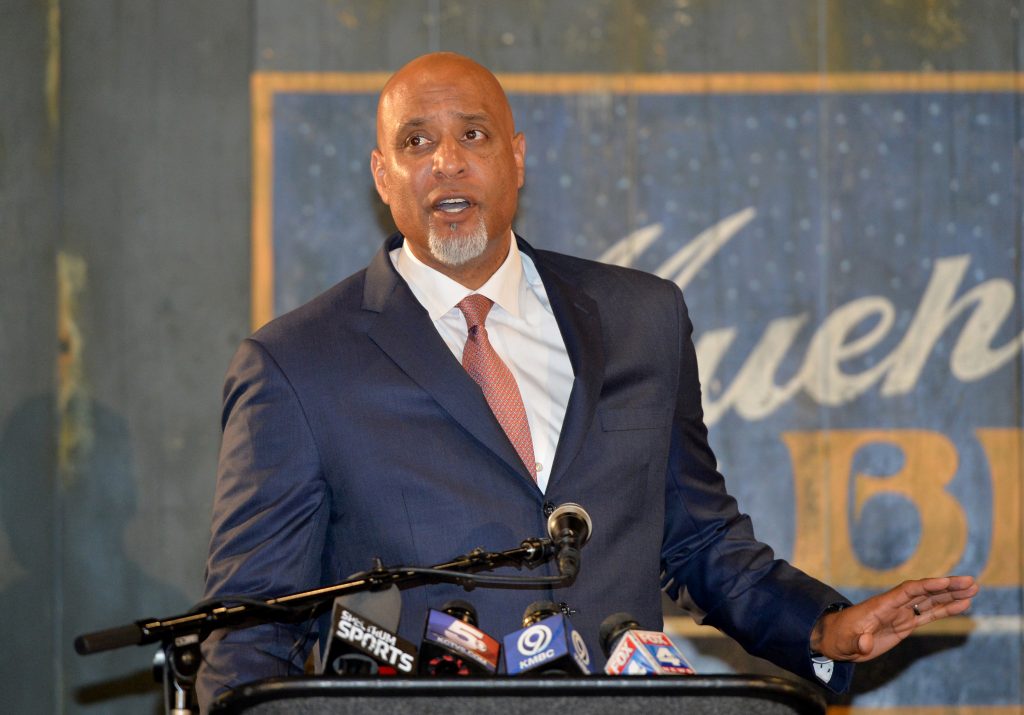
Last week, the MLB Players Association made its second proposal on core economics in collective bargaining discussions with the league, report Evan Drellich and Ken Rosenthal of the Athletic. The new proposal contained only minor adjustments compared to the PA’s first offer, which was made back in May.
Drellich and Rosenthal reported in August that the MLBPA’s first offer included an emphasis on earlier arbitration for young players, but other details on their vision remained sparse. The Athletic now shines more light on that initial offer, suggesting that an alteration to the draft order, a higher league minimum salary, elevated luxury tax thresholds, alterations to the revenue sharing system, and an unspecified change in how service time is calculated were all included in that opening proposal. The union’s initial proposal also included scenarios where certain players could qualify for free agency without reaching a full six years of major league service. Whether all of those goals remained in the union’s second offer is not clear.
Major League Baseball made one counteroffer in August — a radically different setup that would’ve included lowered luxury tax thresholds with an accompanying salary floor, an age-based system in which players first reach free agency at 29.5 years old, and a revenue-based pool system to replace the current arbitration structure. Given the massive differences in what’s publicly known about each side’s offers, it’s no surprise the MLBPA reportedly considered the league’s offer a non-starter.
Drellich and Rosenthal also shed a bit more light on MLB’s first proposal. The league’s proposed salary floor, which was to be set at $100MM, was a “soft” floor, featuring unspecified penalties for teams that don’t reach that mark in annual payroll rather than a firm mandate to do so. To address players’ concerns about rebuilding teams, MLB’s offer included a provision that would prevent teams from picking in the top five of the amateur draft in three consecutive seasons.
MLB’s proposal also included a provision to overhaul the system for teams to acquire international amateur prospects, per Drellich and Rosenthal. Currently, teams are annually allotted a hard-capped bonus pool to sign amateur players from outside of the U.S., Canada and Puerto Rico. While deals can’t formally be signed until the player turns 16 years old, teams and player representatives often come to verbal agreements a year or more in advance. According to the Athletic, MLB proposed to replace the current system with an international draft, the details of which remain unclear.
The potential for a collectively bargained international draft has long been bandied about. Were it to come to fruition, it’s generally expected that draft would be a separate entity from the current Rule 4 draft for acquiring domestic amateur talent. An international draft would foreclose the potential for advance verbal agreements for incredibly young players, but it’d also obviously restrict those players’ abilities to choose their preferred destination.
It’s clear that MLB and the MLBPA remain far apart on core economic concepts, but Drellich and Rosenthal report that the sides have made progress in ancillary bargaining areas and are slated for in-person talks at next week’s general managers meetings. The current CBA expires on December 1, and Drellich wrote earlier this week it’s expected that failure to agree on a new CBA by then would result in a lockout and accompanying transactions freeze. Commissioner Rob Manfred and MLBPA executive director Tony Clark have continued to express hope they’ll reach agreement before that point, but the general tenor on the situation has seemed to skew more pessimistic.
MLBPA Makes Second Core Economics Proposal To MLB - MLB Trade Rumors
Read More
No comments:
Post a Comment